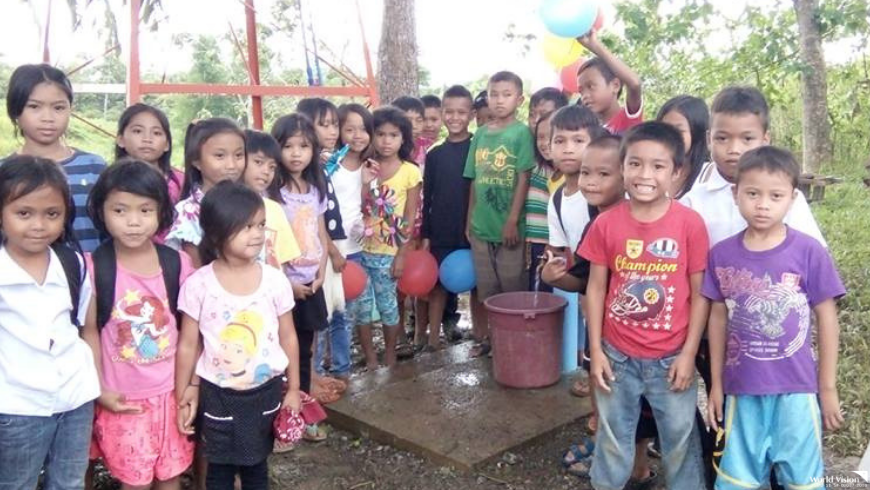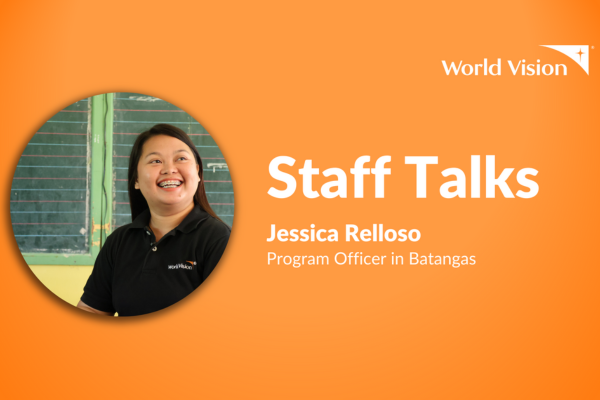The domino effect of poor WaSH (Water, Sanitation and Hygiene) conditions
World Vision links schools to clean water access and hygiene facilities in Mindanao
Over 162 students in Zamboanga del Norte couldn’t be happier when World Vision recently installed a water system in their elementary school situated in the town of Siayan.


“We are happy because we no longer need to always walk for an hour just to get water. At lunch and during break time, we can immediately get drinking water,” shares Angel, one of World Vision’s assisted children in Siayan.
In Misamis Occidental, World Vision also partnered with the school to install handwashing facility, toilets and overhead water tank system which is hoped to ensure better sanitation and a steady supply of clean tap water to thousands of students.
“We have more than 2,000 students in the school. Some toilets we had to close because the water cannot reach the upper floors of the building,” explained the school principal Lilibeth Abamonga, as she shared the reality of limited toilets amidst their growing population.
“No student or any child should be without access to these basic facilities, whether in school or in their community. This is a basic right,” shares World Vision’s Operations Director Xenia Legaspi.
The domino effect of poor WaSH conditions
In 2016, the Department of Education (DepEd) issued Order No. 10, s. 2016 – Policy and Guidelines for the Comprehensive Water, Sanitation and Hygiene in Schools Program (WiNS), in the premise that “quality education requires a healthy and enabling environment”. Among the key components of the program include the availability of safe drinking water on a daily basis, safe water for cleaning in school and adequate, clean, and functional toilets.
DepEd revealed that out of the 46,739 schools nationwide, 3,628 elementary and secondary schools are without a regular source of water, while more than 8,000 rely on rainwater catchment. This translates to about five million students.
DepEd also raises concern on the shortage of toilets in schools which pose health risks and diseases such as diarrhea, considered one of the leading causes of death in the country. Prolonged exposure to unsanitary environments could also cause other diseases like stunting and intestinal worm infection.
“One of World Vision’s advocacies is the promotion of child well-being through health and nutrition interventions. World Vision aims to help counter the prevalence of malnutrition in the country and thus implements programs like the Pinoy Nutrition Hub (PNH),” shares Jocelyn Mariscal, Associate Operations Director in Luzon and Mindanao. PNH aims to quickly rehabilitate malnourished children, prevent future malnutrition and sustain the learned behaviors from a 12-day session by using available resources in the community.
“No matter how we push for programs such as this, poor WaSH conditions will render our interventions useless, hence, our staunch advocacy for access to WaSH facilities,” adds Mariscal. According to the World Health Organization (WHO), roughly 50% of all malnutrition cases are associated with repeated diarrhea or intestinal worm infections as a direct result of inadequate water, sanitation and hygiene.
Poor WaSH condition also has a serious impact on children’s education.
Children like Krystal and her friends who have to walk for clean water could have spent the two hours going back and forth for studying. The education of those who have fallen ill due to WaSH concerns will likely be disrupted. The security that goes with crossing rivers and mountains just to fetch water is also an issue of child protection.

World Vision sponsored children and friends Jessa Mae, Krystal, Irish and Angel had the biggest grin when a water system was finally installed in their school.
Multi-stakeholder approach
World Vision recognizes the capacity of the community, the local government and other partners in ensuring the well-being of children. In Zamboanga del Norte and Misamis Occidental, collaboration is crucial as the successful installation of toilets and handwashing facility involved all local stakeholders including the school, the local government units (LGUs), parent-teacher associations and even the students.

“There is still so much to do but we are taking it one school at a time. This is always in the hope that our children will grow up in an enabling environment and in turn become contributors to the society,” ends Legaspi.
World Vision’s WaSH initiatives not only contribute to the well-being of children, but also aligns with Philippine development goals and the Sustainable Development Goals (SDG) 4 which aims to ensure inclusive and equitable quality education and promote lifelong learning opportunities for all and SDG 6 to ensure availability and sustainable management of water and sanitation for all.
Discover the joys of child sponsorship
Stay up to date with World Vision Philippines! Follow us on Facebook, Twitter and Instagram.








